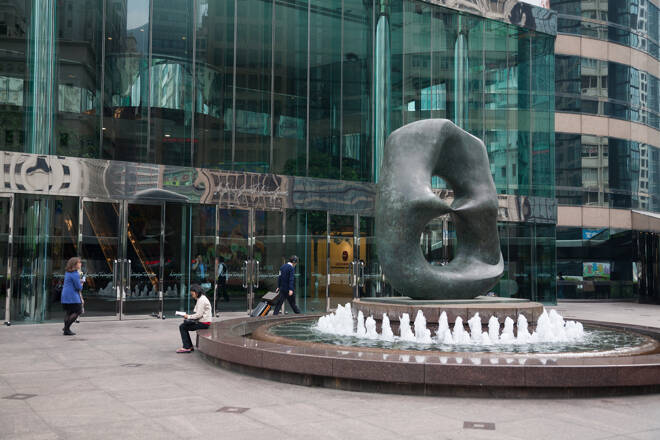Advertisement
Advertisement
Hang Seng Index, ASX200, Nikkei 225: China Inflation in the Spotlight
By:
It is another busy morning for the Hang Seng and broader Asian markets, with China consumer price inflation and producer price index numbers in focus.
In this article:
Key Insights:
- It was a mixed Tuesday session. While the Nikkei and ASX 200 avoided the red, the Hang Seng Index hit the reverse on disappointing trade data from China.
- Mixed Fed chatter and better-than-expected economic indicators from Australia and Japan supported the ASX 200 and Nikkei.
- This morning, investors will respond to economic indicators from China, with inflation in focus.
It was a mixed Tuesday session for the Hang Seng Index and the broader Asian markets. The Hang Seng Index hit reverse, while the ASX 200 and Nikkei made modest gains.
There were no overnight economic indicators from the Monday US session to influence. However, investors considered Fed chatter. FOMC member John Williams talked about rate cuts in 2024 if inflation softens. In contrast, FOMC member Michelle Bowman said more rate hikes will likely be needed. However, as vice chair of the Fed, Williams has more influence on the markets.
Tracking gains from the US equity markets on Monday, better-than-expected economic indicators from Australia and Japan also provided support.
However, trade data from China sent the Hang Seng Index into the red and capped the upside for the ASX 200.
Exports from China tumbled by 14.5% in July versus a 12.4% decline in June. Imports slumped by 12.4% versus a more modest 6.8% fall in June. Economists forecast exports to fall by 9.8% and imports to decline by 5.6%. The dollar trade surplus widened from $70.62 billion to $80.60 billion.
Today, the Asian economic calendar will influence, with inflation and producer price index numbers from China in focus. Investors will also respond further to Moody’s cutting the credit ratings of several small to medium-sized US banks and the threat of downgrading larger US banks on weaker profitability and liquidity.
From the Tuesday US session, investors will need to consider Fed chatter. FOMC member Patrick Harker suggested the Fed may be at the end of the monetary policy tightening cycle.
The NASDAQ Composite Index fell by 0.79% on Tuesday. The Dow and the S&P 500 saw losses of 0.45% and 0.42%, respectively.
ASX 200
The ASX 200 gained 0.03% on Tuesday. Better-than-expected consumer and business confidence figures cushioned the impact of a slide in China imports and exports.
On Tuesday, ANZ Group (ANZ) and Westpac Banking Corp (WBC) saw losses of 0.24% and 0.55%, respectively. However, The Commonwealth Bank of Australia (CBA) and The National Australia Bank (NAB) saw gains of 0.35% and 0.25%, respectively.
Mining stocks had a bearish session, with Rio Tinto and BHP Group Ltd (BHP) ending the day down 0.42% and 0.55%, respectively. Newcrest Mining (NCM) declined by 0.46%, while Fortescue Metals Group rose by 0.43%.
Oil stocks had a mixed session. Woodside Energy Group (WDS) gained 0.58%, while Santos Ltd (STO) fell by 0.76%.
Hang Seng Index
The Hang Seng Index slid by 1.81% on Tuesday as investors responded to the July trade data from China.
Considering the main Index components, Tencent Holdings Ltd (HK:0700) and Alibaba Group Holding Ltd (HK:9988) saw losses of 1.70% and 2.20%, respectively.
Bank stocks also had a bearish session. HSBC Holdings PLC fell by 0.08%. The Industrial and Commercial Bank of China (HK:1398) and China Construction Bank (HK: 0939) ended the day down 0.27% and 0.23%, respectively.
CNOOC (HK: 0883) ended the day flat.
Nikkei 225
(For reference purposes only)
The Nikkei 225 found further support on Tuesday, gaining 0.38% off a stronger USD/JPY. Softer wage growth figures from Japan aligned with the Bank of Japan’s ultra-loose mantra, weighing on the Yen.
The banks had a bearish session. Sumitomo Mitsui Financial Group (8316) and Mitsubishi UFJ Financial Group saw losses of 0.58% and 0.35%, respectively.
Looking at the main components, SoftBank Group Corp. (9984) rose by 1.52%, with Fast Retailing Co (9983) and Sony Corp (6758) seeing gains of 0.47% and 0.46%, respectively. KDDI Corp (9433) also found support, rising by 0.22%, while Tokyo Electron Limited (8035) fell by 0.86%.
Check out our economic calendar for economic events.
About the Author
Bob Masonauthor
With over 20 years of experience in the finance industry, Bob has been managing regional teams across Europe and Asia and focusing on analytics across both corporate and financial institutions. Currently he is covering developments relating to the financial markets, including currencies, commodities, alternative asset classes, and global equities.
Latest news and analysis
Advertisement
